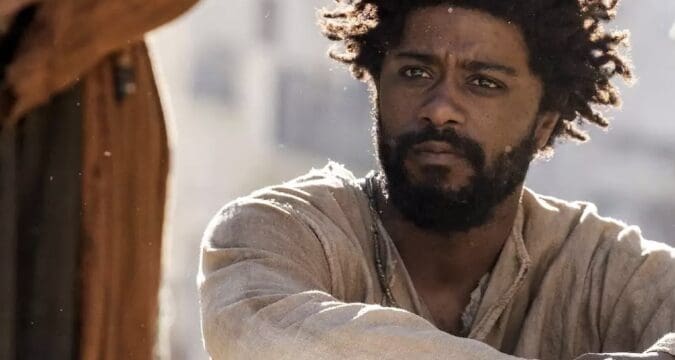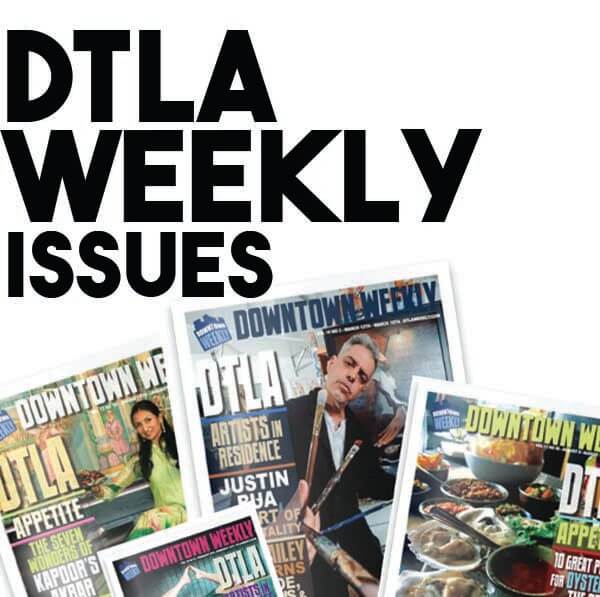
The first two months of the calendar year are ubiquitous within the film industry as the time of year which studios reserve for low risk, high reward releases. While the summer season is renowned for its blockbusters and the holidays ring in many of the year’s biggest Oscar contenders, early-year releases in January and February typically consist of marketing dependent genre-driven vehicles. Examples of this in recent memory range from the forgettable (2023’s House Party remake anybody?) to modern classics such as Get Out.
Cover Photo: Courtesy MORIS PUCCIO/SONY PICTURES
The Book of Clarence, the recently released biblical-era comedy from director Jeymes Samuel and the follow up to his feature directorial debut The Harder They Fall, risks a fate closer to the former. It follows Clarence portrayed by Lakeith Stanfield as the fictional downtrodden twin brother of the apostle Thomas as he struggles to shed the moniker as the black sheep of the family and win the favor of the woman he loves. Despite his best efforts, his far-fetched plans always seem to draw the ire of influential figures in ancient Judean society by indebting himself to local loan shark Jedediah the Terrible and stealing from the Roman police force. This is until Clarence attempts to become an apostle and, ultimately, the new Messiah to save himself from certain doom.
On the surface the film incorporates many of the tropes of a modern urban crime caper juxtaposed within a Judean biblical setting. In addition to the aforementioned crime boss and overbearing police presence, Clarence represents a stereotypical hustler hell-bent on crawling his way out of the gutter through whatever means necessary, often selfish ones. Director Jeymes Samuel also makes several stylistic choices to remind viewers that despite Clarence’s skepticism toward the coming of the Messiah, whom he is so comfortable discrediting so as to imitate his rise to influence, audience members are indeed inhabiting a fantastical world marked by the Age of Miracles of Christ and his apostles. This includes Jesus halting stones in mid-air to prevent Mary Magdalene’s stoning, healing her wounds, and Clarence floating in place after smoking opium.
While these stylistic choices are effective in establishing the tone of the film, the strength of the project lies in the comedic performances of Stanfield, RJ Cyler as Clarence’s best friend Elijah, and Omar Sy as the freed slave Barabbas. The trio’s banter throughout the movie helps maintains an air of levity from opening to closing credits. Another impressive facet of the project is the character development of Clarence. Through the lens of Stanfield’s charismatic performance, Clarence’s moral arc swings from self-serving societal derelict to what is clearly the filmmaker’s vision of an everyday Messiah worthy of veneration: a person willing to relinquish everything that they have yearned for in favor of selfless altruism. This theme is evidenced when Clarence purchases the freedom of the enslaved people from which Barabbas hails with the funds acquired from his numerous scams in lieu of paying off his debts. For good measure, it is symbolically punctuated when Clarence, in part due to his own self-proclamation as the new Messiah, is crucified by the Romans after Judas’s betrayal and redeems himself by refusing to divulge the whereabouts of Jesus Christ.
Despite these elements working in the film’s favor, the final act of The Book of Clarence falls victim to the third act crunch that so often undermines what was otherwise a streamlined story. As the movie builds toward its narrative climax, a character named Benjamin portrayed by Benedict Cumberbatch as a beggar throughout the story experiences a wonderful stroke of luck. Christ bestows upon him the ability to multiply as much money as his heart desires, which he chooses to invest in a makeover that transforms his appearance into that of the traditional Western depiction of Christ: a white man with wavy flowing locks of hair that appear in stark contrast to the film’s representation of Christ as a black man portrayed by Nicholas Pinnock (not to mention secular historians’ account of Christ’s appearance). Catching wind of this development, Benjamin, rather than the true Messiah, is rounded up by the Romans and crucified beside Clarence. While this is clearly intended to insinuate the modern archetype of Christ, the presence of several supposed concurrent Messiahs leave the final half hour of the film feeling congested with the presence of three parallel storyline threads.
Ultimately, with awards season in full swing and movie-goers’ attentions still divided in an attempt to retroactively catch up on 2023’s most relevant releases, even Lakeith Stanfield’s magnanimous charm along with the rollicking ensemble cast of Jeymes Samuel’s second feature film aren’t going to be big enough draws to pull The Book of Clarence out of the ether and into relevant conversation either now or in the future.
Final Verdict: 2/5 Stars
![]()


















